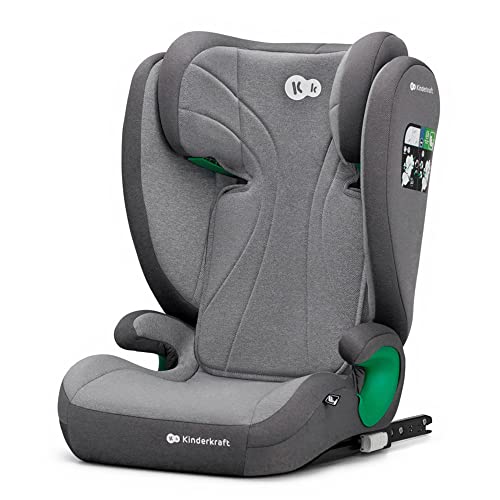Transitioning from Pram to Stroller: A Comprehensive Guide for Parents
Browsing the world of baby gear can be frustrating for brand-new parents, specifically when it comes to picking in between prams and strollers. Both serve essential functions, however they are developed for different requirements and phases of a kid's advancement. This short article aims to inform moms and dads about the shift from prams to strollers, outlining the advantages and factors to consider while providing useful pointers.
Understanding Prams and Strollers
Before diving into their differences, it's important to comprehend what makes up a pram and a stroller.
Prams:
A pram, short for perambulator, is typically designed for infants approximately around 6 months old. It includes a flat, cushioned sleeping area and is mostly intended for transporting extremely children. Prams are created for comfort and security, as newborns require to lie flat to support their spine and organs.
Strollers:
Strollers, or pushchairs, are created for somewhat older kids who can stay up unaided. They are available in different designs and setups, from lightweight umbrella strollers to heavier-duty designs appropriate for rough terrains. Top Pram are more flexible and easier to steer in congested spaces, making them a popular option for active families.
Advantages of Transitioning from Pram to Stroller
- Increased Mobility and Convenience
Strollers are typically lighter and more compact than prams, making them simpler to steer through shops, public transportation, and crowded locations. The majority of strollers can fold easily, permitting convenient storage. - Flexibility for Different Activities
Modern strollers often feature several configurations and can accommodate numerous activities, consisting of jogging, outdoor adventures, and shopping trips. They can also adjust to suit children of various ages and weights. - Boosted Child Comfort and Safety
Numerous strollers now come equipped with innovative security features, such as five-point harnesses and reclining seats, making sure that older babies and young children remain comfy and safe throughout trips. - Economical Solution
Instead of buying both a pram and a stroller, households can purchase a high-quality stroller that meets the needs of their growing child, potentially saving money in the long run.
When to Make the Transition
The transition from a pram to a stroller usually happens when the kid reaches around 6 to 7 months of age or when they can stay up unassisted. However, numerous elements can affect this shift, consisting of:
- Child's Development: If the child reveals signs of wishing to explore their surroundings, it may be time to change to a stroller.
- Family Lifestyle: Active households may need a stroller sooner to accommodate trips and travel.
- Convenience: Observe the child's comfort level. If they seem cramped in a pram or are ending up being more active, it's time to consider a stroller.
Picking the Right Stroller
Picking the right stroller requires mindful factor to consider of numerous factors:
| Factor | Description |
|---|---|
| Security Features | Try to find strong construction, reliable brakes, and harness systems. |
| Weight and Foldability | Choose a light-weight stroller that is easy to fold and transfer. |
| Age Appropriateness | Make sure the stroller is fit for your kid's age, weight, and height. |
| Maneuverability | Check how easily the stroller relocations and turns, specifically in congested spaces. |
| Storage Space | Think about the storage capacity beneath the stroller and the size when folded. |
| Adjustability | Look for strollers with adjustable features, such as seat recline and handle height. |
FAQs about Transitioning from Pram to Stroller
Q: Is it needed to change to a stroller?A: While it's not mandatory, switching to a stroller normally offers more versatility and ease for both moms and dad and kid as they grow. Q: What features ought to I focus on
in a stroller?A: Prioritize security functions, weight, foldability, and storage capacity based on your way of life and activities with your kid. Q: Can I utilize a stroller for newborns?A: Some strollers can accommodate baby vehicle seats or
have flat reclining seats, making them ideal for
newborns. Always check the maker's guidelines. Q: How can I ensure my kid is comfortable in a stroller?A: Look for strollers with padded seats, multiple recline positions, and adjustable leg rests to accommodate your child's comfort. Q: What are the best kinds of strollers available?A: Popular types consist of umbrella strollers, running strollers, travel system strollers, and convertible strollers, each catering to differentneeds. Tips for a Smooth Transition Test Out Different Models: Before dedicating to a purchase, physically test different strollers to see which one fits both you and your kid best. Involve Your Child:
If they are old enough, permit your
kid to try different strollers to see which they find most comfortable. Read Reviews: Consider looking at online reviews and suggestions from other moms and dads to better inform your choice
. Prepare for Storage and Transport: Factor in how the stroller will suit your cars and truck or home storage space to avoid future inconveniences.
- Assess Your Activities: Think about where and how you prepare to use the stroller-- metropolitan locations might require a different type compared to rural or off-road settings.
- Transitioning from a pram to a stroller is a crucial turning point in a kid's life and a significant decision for parents. By comprehending the differences and
advantages of each, moms and dads can make informed choices that will support their household's way of life and their kid's development. Equipped with the best details, moms and dads can confidently navigate this transition and
guarantee that their child is safe, comfortable, and all set for all the adventures ahead.

